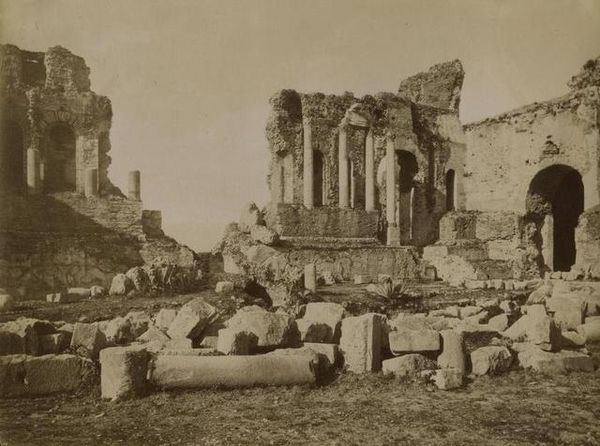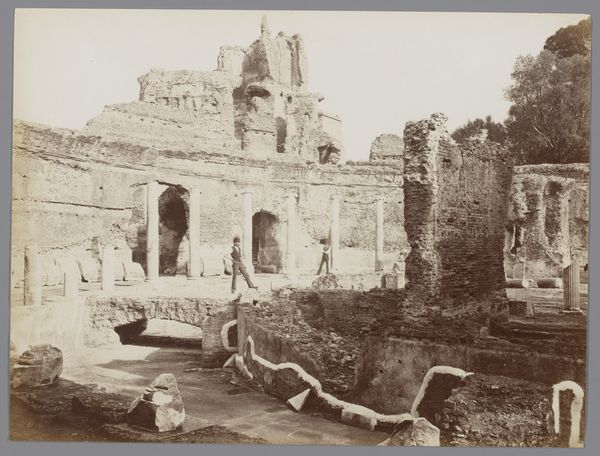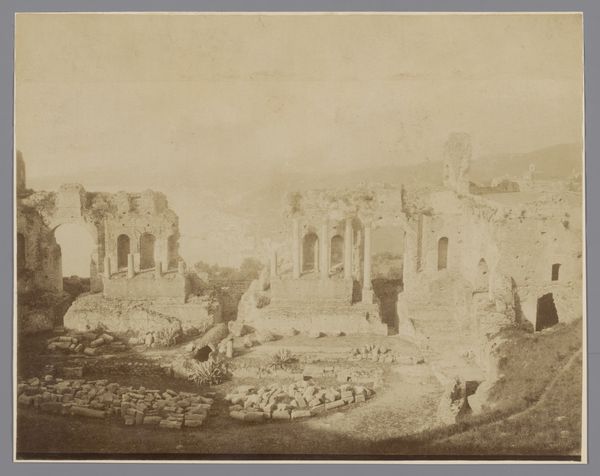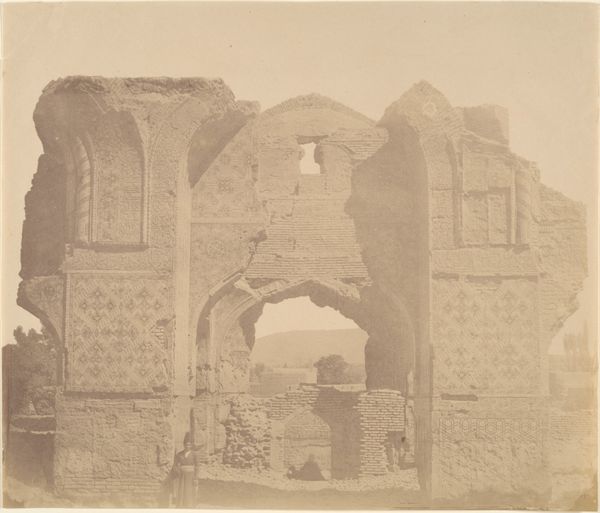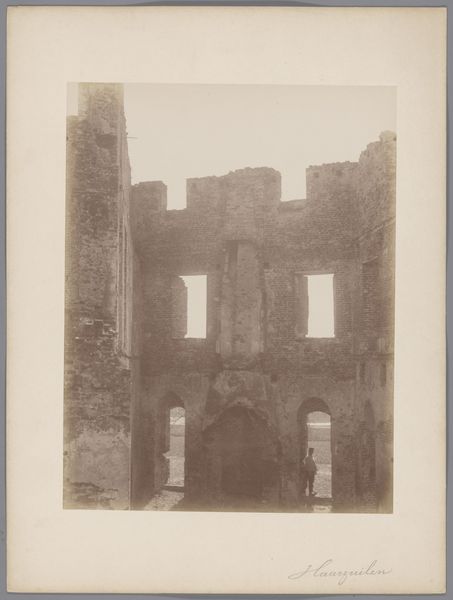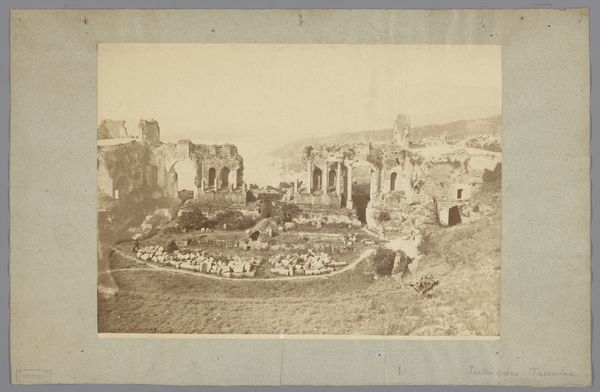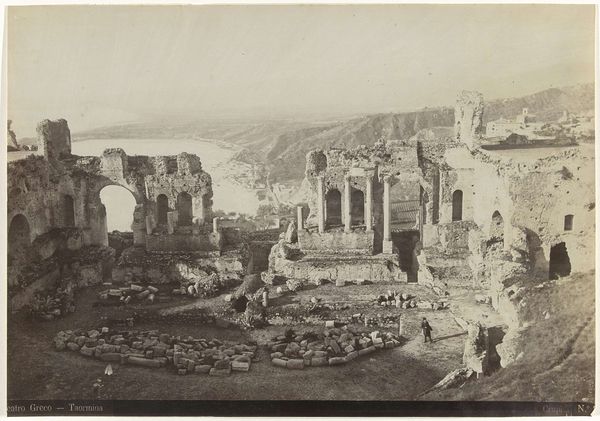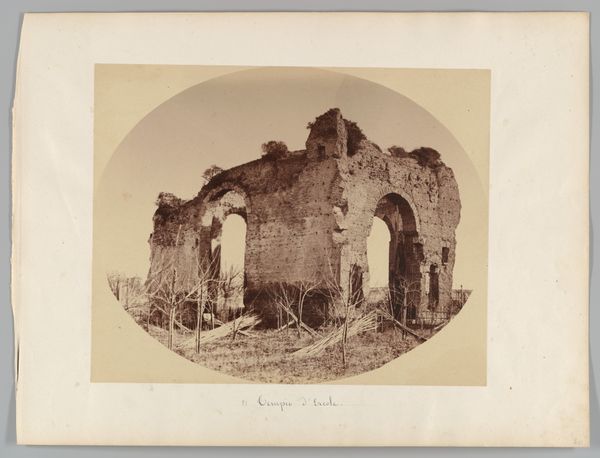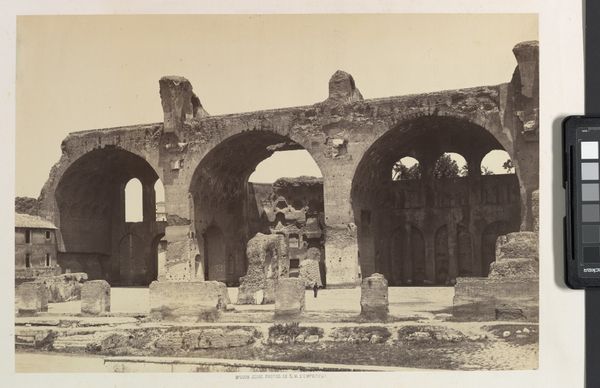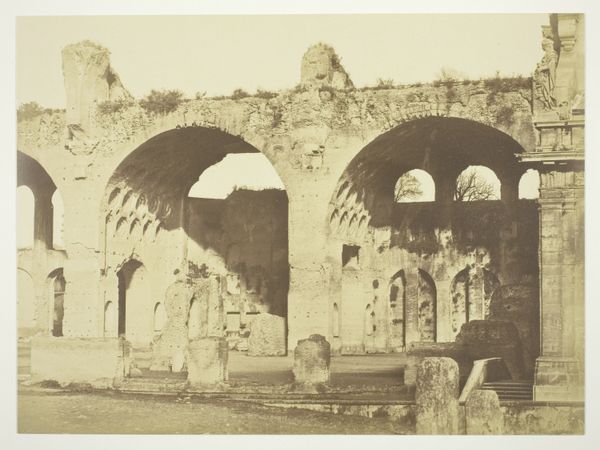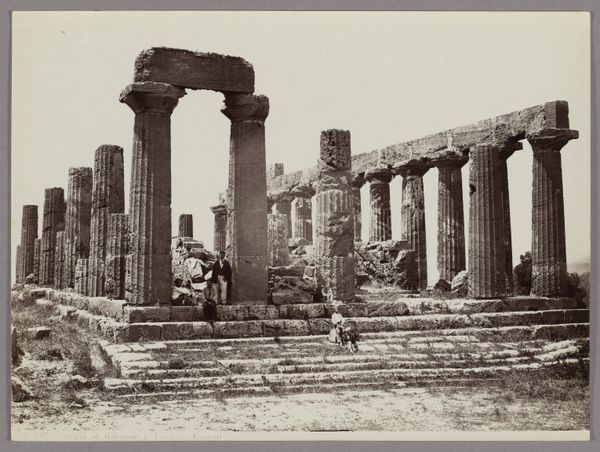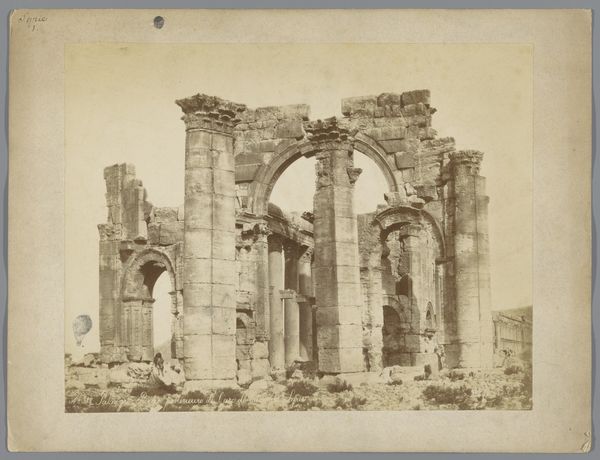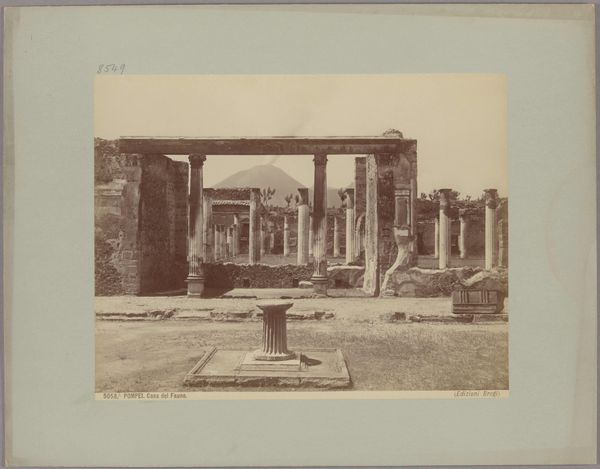
photography
#
landscape
#
classical-realism
#
photography
#
ancient-mediterranean
Dimensions: height 192 mm, width 246 mm
Copyright: Rijks Museum: Open Domain
Curator: This striking photograph, taken sometime between 1880 and 1900, depicts the remnants of the Teatro Greco in Taormina, Italy. The photographer is Ledru Mauro. Editor: The ochre tones give it a warm, sepia quality. It’s monumental yet softened by time, isn't it? There's an evocative tension between decay and enduring architectural form. Curator: Indeed. This image captures the Romantic vision of ruins, a visual language reflecting broader interests of the era. Think of the fascination with classical civilizations and their influence on Western art and architecture. It's also a moment of early travel and visual documentation, popularizing views of ancient sites like Taormina. Editor: The way those stone blocks are strewn about; it speaks volumes about the human effort involved in its original construction – and later, its disintegration. Each fractured piece bears witness to centuries of exposure, of material wearing away under sun and rain. It really prompts thinking about how such structures represent enormous investments of resources and labor. Curator: Precisely. And photographs like these also played a part in creating a sort of shared cultural understanding, contributing to a European, often aristocratic, consciousness steeped in the history of the "Grand Tour". Consider how such imagery could create imagined communities through visual culture. Editor: I also note the people included within the image – seemingly leisurely posing among the ruins. It prompts me to think about how photographic practices became entangled with the touristic gaze, altering historical contexts and imposing contemporary subjectivities onto ancient narratives. Curator: Absolutely, framing questions of ownership and accessibility to ancient cultural heritage. Photography made this experience portable, easily consumed in the comfort of home. Editor: I like how you brought the museum's role into the discussion, it’s helped me to see how even a static image becomes an active participant within a larger cultural network, constantly shifting based on exhibition, collection practices, and access. Curator: Seeing these fragments visualized with such intentionality emphasizes the continued hold ancient monuments had, and have, on us.
Comments
No comments
Be the first to comment and join the conversation on the ultimate creative platform.
